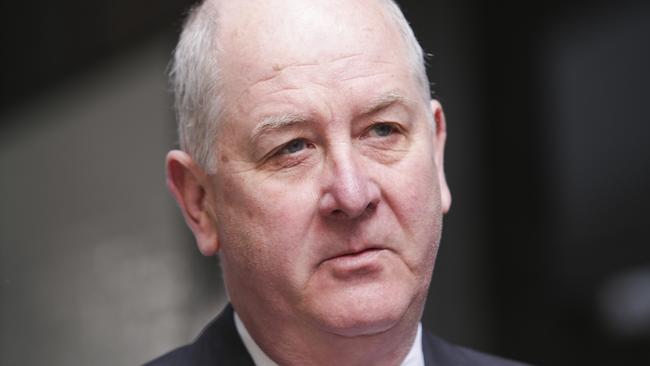Labor refuses to be rushed on removal of fire-risk cladding
The Andrews government is resisting pressure to quicken the removal of potentially deadly cladding on Melbourne buildings.

The Andrews government is resisting pressure to quicken the removal of potentially deadly cladding on buildings across Melbourne following a fire in the CBD, after the opposition warned someone could die while the material remained in place.
Planning Minister Richard Wynne conceded yesterday he was yet to appoint a state building inspector, despite promising to do so more than a year ago as part of the Labor government’s measures to address flammable cladding.
Residents of the Neo200 apartment building were yesterday told they could not return to their apartments for at least 48 hours, following Monday’s blaze that saw cladding catch alight and flames rush between the 22nd and 27th floors.
One person was treated for smoke inhalation. Firefighters believe an internal sprinkler system prevented the blaze — suspected of starting when a cigarette butt ignited clothing on one of the balconies — from becoming a “much more significant fire”. The Metropolitan Fire Brigade also raised safety issues over overcrowding, with as many as 10 beds found in some apartments, but argued against making public the list of 360 buildings identified as being in the “higher risk categories” by the Victorian Cladding Taskforce.
The same cladding on the Neo200 building — which was classified as a moderate fire risk — was used on London’s Grenfell Tower, where 72 people died in a June 2017 fire.
Premier Daniel Andrews yesterday said the government would “stay the course” on its actions on the advice of the taskforce, created after the 2014 fire at the Lacrosse building in Melbourne’s Docklands.
He also rejected a proposal by Victorian Greens leader Samantha Ratnam to set up a $50 million cladding safety fund to enable owners of apartments with dangerous cladding to get it replaced immediately at taxpayers’ expense, with the onus on the government to recoup the cost from builders.
“The most important thing to do is to listen to the advice provided by the bipartisan inquiry into these very serious issues, not just issue in Victoria, I might add,” Mr Andrews said.
The government and MFB assistant chief fire officer Trent Curtin warned of the potential for arsonists to target buildings with cladding of the highest risk if they were publicly identified, and put the onus on building managers and apartment owners to share that information.
“I think there’s plenty of evidence to suggest that residents don’t currently have the information that they need,” Mr Curtin said. “The MFB is an advocate for residents having the information they need.” He added that the MFB said “cladding shouldn’t be on properties that are greater than three storeys high”.
Mr Wynne, asked about a commitment made in 2017 to appoint a state building inspector, said: “We have been involved in very extensive negotiations, not only around the question of a new building inspector, but the (Victorian Building Authority) of course have been actively engaged in addressing the very significant issues that pertain to cladding more generally.”


